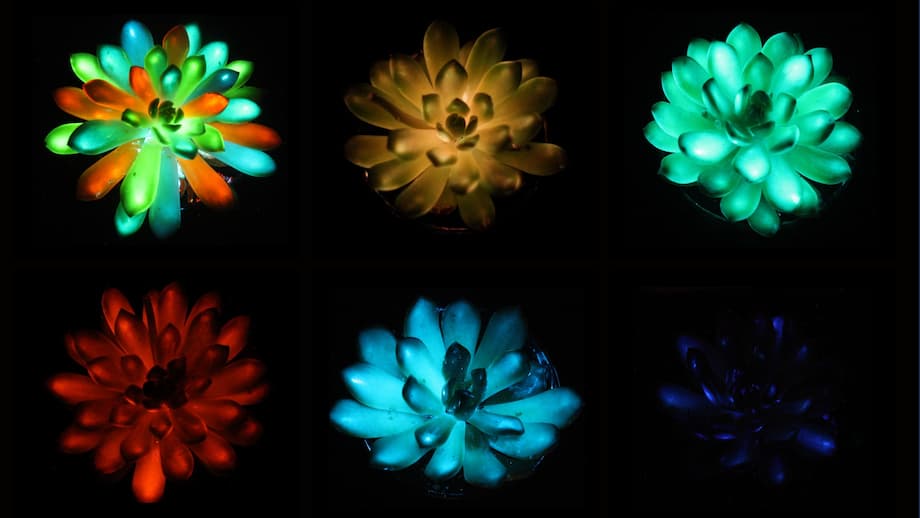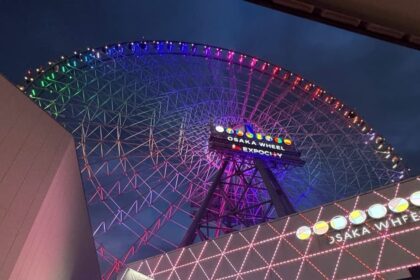Succulents That Shine: The Breakthrough in Plant-Based Lighting
Imagine a garden that glows in a rainbow of colors after sunset, or a living wall of plants bright enough to read by in the dark. This vision, reminiscent of the bioluminescent flora in the movie Avatar, is now a step closer to reality thanks to a team of scientists at South China Agricultural University. Their recent breakthrough: the world’s first multicolored, glow-in-the-dark succulents, which recharge using sunlight and could pave the way for sustainable, plant-based lighting systems.
These luminescent succulents, created by injecting specially engineered phosphor particles into their leaves, shine as brightly as a small night lamp and can be made to glow in green, blue, red, and even white. The innovation not only dazzles the eye but also promises practical applications for eco-friendly lighting in homes, gardens, and public spaces.
How Do These Succulents Glow?
The secret behind these glowing plants lies in the use of afterglow phosphor particles—materials similar to those found in glow-in-the-dark toys and paints. When exposed to sunlight or LED light, these particles absorb energy and then slowly release it as visible light over the course of up to two hours. The process is simple, cost-effective, and does not require any genetic modification of the plant itself.
To create the effect, researchers ground phosphors (compounds made of strontium and aluminum, doped with other metals) into particles about 7 micrometers wide—roughly the size of a human red blood cell. This size proved crucial: smaller nanoparticles moved easily through plant tissues but emitted only a faint glow, while larger particles glowed brightly but could not diffuse through the leaves. The 7-micrometer “Goldilocks” particles were just right, diffusing quickly and evenly throughout the succulent’s fleshy leaves to create a uniform, vivid luminescence.
Each leaf must be injected individually, a process that takes about 10 minutes per plant and costs around $1.40 in materials. After charging in sunlight or under indoor LEDs for a few minutes, the treated succulents glow for up to two hours, with the brightness gradually fading over time. The glow can be recharged repeatedly over at least ten days, according to the researchers.
Why Succulents?
Not all plants are suitable for this glowing makeover. The researchers tested their method on various species, including bok choy and golden pothos, but only succulents—specifically the Echeveria ‘Mebina’ variety—produced a strong, uniform glow. The reason lies in the unique structure of succulent leaves: their dense, fleshy tissues and relatively large gaps between cells allow the micron-sized phosphor particles to spread evenly, creating a consistent afterglow. In contrast, thinner-leaved plants either failed to absorb the particles or produced only patchy luminescence.
From Science Fiction to Living Night Lights
The inspiration for this research came partly from popular culture. As Dr. Shuting Liu, a lead researcher on the project, explained, the team was motivated by the glowing plants in Avatar and the idea of creating living, solar-powered lighting. Previous attempts to engineer glowing plants relied on genetic modification—such as inserting firefly or mushroom genes into tobacco or petunia plants—but these methods produced only faint green glows and were limited in color range and brightness.
Material-based approaches, which involved injecting light-emitting particles, also struggled with brightness and uniformity. The breakthrough came when the team realized that optimizing the size and composition of the phosphor particles, and choosing the right plant structure, could overcome these limitations. The result: succulents that glow in multiple colors, forming a rainbow of lights even within a single plant.
Building a Wall of Light
To demonstrate the practical potential of their invention, the scientists constructed a wall of 56 glowing succulents. When charged, the wall emitted enough light to illuminate nearby objects and even allowed people to read text in the dark. This living light installation showcases the possibility of using plant-based systems for ambient lighting in homes, offices, or public spaces, reducing reliance on traditional electric lights and their associated carbon footprint.
How Safe and Sustainable Is the Technology?
One of the key advantages of this method is its simplicity and low cost. Unlike genetic engineering, which is expensive and raises regulatory concerns, injecting phosphor particles is straightforward and does not alter the plant’s DNA. The materials used are similar to those found in consumer products and are not known to harm the plants in the short term. Over ten days of observation, the treated succulents continued to grow normally, with no signs of stress or damage. Levels of chlorophyll, sugar, and protein remained stable, suggesting that the process is not toxic to the plants.
However, the long-term safety of the particles—both for the plants and for people who might handle or accidentally ingest them—remains under study. The researchers are conducting further biosafety evaluations to ensure that the glowing succulents can be used safely in homes and public spaces. Experts caution that while the technology is promising, more research is needed before it can be widely adopted.
Environmental Impact and Future Prospects
The potential environmental benefits of plant-based lighting are significant. By harnessing the natural ability of plants to absorb and store light, and combining it with engineered materials, scientists hope to create low-carbon alternatives to electric lighting. Glowing plants could be used for decorative purposes, as night lights, or even to illuminate walkways and gardens. As the technology improves, it may be possible to develop glowing trees or shrubs that could replace streetlights, further reducing energy consumption and light pollution.
How Does This Compare to Other Glowing Plants?
The quest to create glowing plants dates back to the late 1980s, when researchers first inserted firefly genes into tobacco plants to produce faint bioluminescence. More recently, companies like Light Bio have brought genetically engineered glowing petunias to market, but these emit only a dim green light and are limited in their practical use. The new phosphor-injection method stands out for its brightness, range of colors, and ease of application.
As reported in Nature and Scientific American, the use of afterglow phosphors allows for a much wider palette of colors, including red, blue, green, and white. By combining different phosphors, researchers can even create plants that emit a warm-white glow, which is more comfortable for ambient lighting. The process is also repeatable: the glow can be recharged again and again, simply by exposing the plants to light.
Challenges and Next Steps
Despite the excitement, several challenges remain before glowing succulents can become a mainstream lighting solution. The current method requires each leaf to be injected individually, which is labor-intensive and not practical for large-scale production. The glow lasts for about two hours after charging, and while this is sufficient for many uses, extending the duration and brightness will be important for broader adoption.
Researchers are exploring ways to automate the injection process, improve the longevity of the glow, and adapt the technique to other plant species. They are also investigating the use of smaller or differently shaped phosphor particles to enhance diffusion and brightness. Long-term studies will be needed to assess the environmental and health impacts of widespread use.
Public Reaction and Cultural Impact
The announcement of glowing succulents has sparked widespread interest on social media and in the press. Many people are captivated by the idea of living night lights and the possibility of creating magical, glowing gardens. The technology has also inspired comparisons to science fiction and fantasy worlds, highlighting the enduring appeal of bioluminescence in nature and culture.
“If these plants could glow like fireflies or deep-sea organisms, they could provide a low-cost, solar-powered, and beautiful means of lighting homes or gardens,” said one researcher, reflecting the sense of wonder and possibility that the project has generated.
In Summary
- Chinese scientists have developed the world’s first multicolored, glow-in-the-dark succulents by injecting afterglow phosphor particles into their leaves.
- The plants can glow in green, blue, red, and white, shining as brightly as a small night lamp for up to two hours after charging in sunlight or LED light.
- The breakthrough relies on optimizing the size and composition of phosphor particles and leveraging the unique structure of succulent leaves for even diffusion.
- The method is simple, cost-effective, and does not require genetic modification, but each leaf must be injected individually.
- Potential applications include sustainable, plant-based lighting for homes, gardens, and public spaces, with further research needed on safety and scalability.
- The innovation has captured public imagination and could herald a new era of eco-friendly, living lighting systems.












